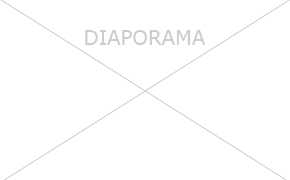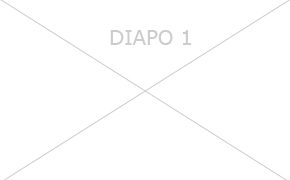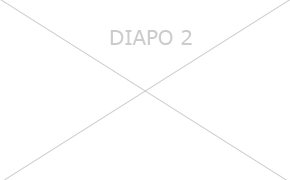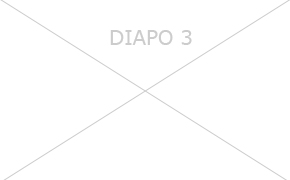Informations générales
Entité de rattachement
Le CEA est un acteur majeur de la recherche, au service des citoyens, de l'économie et de l'Etat.
Il apporte des solutions concrètes à leurs besoins dans quatre domaines principaux : transition énergétique, transition numérique, technologies pour la médecine du futur, défense et sécurité sur un socle de recherche fondamentale. Le CEA s'engage depuis plus de 75 ans au service de la souveraineté scientifique, technologique et industrielle de la France et de l'Europe pour un présent et un avenir mieux maîtrisés et plus sûrs.
Implanté au cœur des territoires équipés de très grandes infrastructures de recherche, le CEA dispose d'un large éventail de partenaires académiques et industriels en France, en Europe et à l'international.
Les 20 000 collaboratrices et collaborateurs du CEA partagent trois valeurs fondamentales :
• La conscience des responsabilités
• La coopération
• La curiosité
Référence
2025-35299
Description de l'unité
Notre Service dédié au Génie Logiciel pour la Simulation (SGLS) réalise et maintient des plateformes génériques, pérennes et open source dans le but :
- de développer des codes de calcul parallèles en mécanique des fluides à différentes échelles (https://sourceforge.net/projects/trust-platform/)
- d'exploiter les codes de calculs à l'aide d'outils de mise en données, prétraitements et postraitements, standards ou spécifiques ;
- de fournir aux physiciens les méthodes et outils leur permettant d'optimiser leurs conceptions et de traiter les incertitudes de leurs études de sureté.
Le Laboratoire d'Intelligence Artificielle et de science des Données (autrement nommé le LIAD) réalise et maintient une plateforme générique, pérenne et open source pour fournir à nos physiciens des méthodes et outils leur permettant d'améliorer leurs modèles, d'optimiser leurs conceptions et de traiter les incertitudes de leurs études : la plateforme Uranie.
Uranie ? Oui, notre plateforme permet dans l'approche VVQI (Validation, Vérification et Quantification d'Incertitude) de créer des plans d'expériences adaptés aux besoins d'une analyse de sensibilité, d'un problème d'optimisation ou de la génération d'une base d'apprentissage ou de test pour un modèle de substitution.
Uranie permet de piloter le lancement des codes ou fonctions de manière séquentielle ou avec différentes approches de parallélisation.
Description du poste
Domaine
Mathématiques, information scientifique, logiciel
Contrat
Stage
Intitulé de l'offre
INTERNSHIP - Uncertainty Quantification for Material Science - 6 months - Saclay H/F
Sujet de stage
Uncertainty Quantification and Zero-shot Classification for Material Science
Durée du contrat (en mois)
6
Description de l'offre
Data analysis is a versatile field that deals with data in many forms, such as structured tabular data, images, time series, etc. While the first might look easier to handle, images are undoubtedly more complicated to process: they usually contain more information, often hidden by a superposition of different sources of signal. Data under this form are particularly interesting, specifically due to their rich scientific content. We shall specifically focus on hyperspectral imaging (HSI). Differently from standard RGB pictures, these images are created by systems that capture information across many different spectral bands (from tens to thousands, depending on the sensor), which might include wavelengths beyond what the human eye can see. This translates to larger volumes of data to digest in order to make sense of the huge amount of information contained in each pixel. By analysing this form of data, we can gain detailed insights into the chemical composition and physical properties of materials, hence the specific interest for our use cases.
For this internship we propose to draw inspiration from recent work in hyperspectral image classification for Mars exploration, though several datasets will indeed play different roles in the development. Differently from mainstream computer vision tasks, the analysis is complicated by the presence of strong correlations amongst absorption bands, by the spectral interference of different components, as well as by a non negligible impact of the sensor used for capturing the scene. The correct assessment of important elements in the spectra and their neighbouring correlations becomes then vital for a correct classification of species involved. The use of state-of-the-art (SOTA) AI algorithms such as multi-head self-attention, coupled to standard signal processing tools (e.g. convolutional neural networks), might then capture the essential information by facilitating the extraction of important features. However, simple classification (or semantic segmentation) techniques do not take into consideration the extremely large variability of classes that materials might present.
Following these considerations, during the internship, we would like to investigate the following points:
- dimensionality reduction: revise SOTA approaches in HSI and analyse their capacity to preserve the information contained in spectra;
- pixel classification: standard approaches in material science require the correct classification by spectrum (i.e. by pixel), though neighbouring relations might be used to promote this to a segmentation task in computer vision;
- zero-shot classification: while most approaches grant an in-distribution generalisation, the ideal algorithm should be able to apply to unseen classes (e.g. a technique à la CLIP for material science);
- uncertainty quantification: study SOTA methods for the quantification of uncertainties for scientifically sound results.
Moyens / Méthodes / Logiciels
deep learning, dimensionality, AI, zero-shot classification, uncertainty quantification
Profil du candidat
We look for a passionate student at the end of their studies (e.g. the French M2 level), with a good understanding of machine learning and coding techniques. Good knowledge of any deep learning framework (PyTorch, JAX, Tensorflow) in Python is mandatory. A basic understanding of physics (such as spectroscopy or basic material science) is appreciated and considered a plus, though not necessary.
Localisation du poste
Site
Saclay
Localisation du poste
France, Ile-de-France, Essonne (91)
Ville
Saclay
Critères candidat
Langues
- Français (Courant)
- Anglais (Intermédiaire)
Diplôme préparé
Bac+5 - Diplôme École d'ingénieurs
Possibilité de poursuite en thèse
Non
Demandeur
Disponibilité du poste
01/05/2025

 Je me crée un espace candidat
Je me crée un espace candidat






